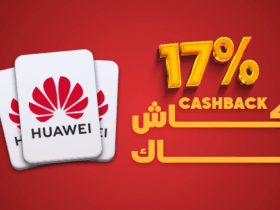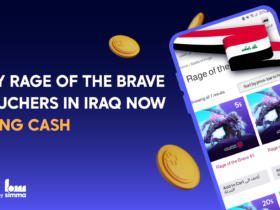And What We Mean by Full Market Access
Driven by its predominantly young and tech-savvy population, MENA has hurled itself headfirst into the global mobile gaming scene with many regional and international titles. PUBG, Mobile Legends, Maliket el Mouda, and Candy Crush are just some of the games that caught on like wildfire, with billions of downloads and masses of monthly users across the region.
The MENA-3 triangle of Egypt, Saudi Arabia, and the UAE is specifically being targeted by international mobile game developers thanks to its large and diverse population, its leading ARPPU (average revenue per paying user) numbers, and the gaming mania gripping much of the Arab world today.
There are many necessary need-to-knows for mobile game enthusiasts and international game developers who are considering MENA. The region promises exciting new frontiers for the gaming industry as a whole, but its intricacies can seem daunting.
This guide provides a layout of MENA’s demographic breakdown, the region’s relationship with tech and gaming in numbers, the characteristics of the MENA mobile gaming market and what makes it unique, and the latest events, trends, and announcements that are transforming MENA into a global mobile gaming hub.
A Bird’s Eye View of MENA Today
It’s easy for people outside of MENA to think of it as a singular hegemonic entity. In reality, there are many nuances that run deep across the region that’s double the size of Australia. As a whole, MENA comprises 19 countries that are geographically split into three major subregions. North Africa extends from Morocco in the northwestern corner of the continent all the way to Egypt in the northeast, and includes Sudan and Mauritania. The Levant in west Asia consists of Jordan, Lebanon, Syria, and Palestine, and connects to northeast Africa via borders with Egypt. Finally, the Gulf includes nations within the Arabian Peninsula such as Saudi Arabia, the UAE, and Iraq.
While Arabic is the official language across MENA countries, there’s a wealth of different dialects spoken, and in some cases written, across the region. Maghrebi Arabic, Lebanese Levantine, and Bahraini Gulf Arabic all sound like different languages.
To better understand the intricacies of different Arab cultures and how they inform the methods international brands implement when approaching MENA, including how to navigate all the different dialects, take a look at our piece “How Culture Plays a Role in Different MENA Markets.”
The World Bank’s figures from 2021 have the population of MENA at 456 million across our 19 nations. Egypt is by far the most populous nation in the region with over 100 million citizens, followed by Sudan, Iraq, and Algeria, all of which have less than half of Egypt’s headcount. Around 50% of the total MENA population is under 30, and 66% live in urban communities. The Gulf (otherwise known as the GCC) has a total population of 56.4 million, of which only 27.6 million are nationals. The remaining 51% are expatriates—predominantly Arab and Asian workers and professionals.
Looking at the macroeconomics, the MENA region has collectively achieved a total GDP of $2.86 trillion, according to 2021 World Bank data. The Gulf states are home to the highest average-income individuals, with both Saudi and UAE citizens registering an average annual income of over $50,000 per person.
When it comes to mobile phones, the Middle East’s first mobile network operator was UAE’s Etisalat. The state-owned Emirati telecommunications giant launched the network in 1982 with a few hundred subscribers, mainly high-profile officials and business leaders. Today, the MENA region boasts a SIM card penetration rate of over 105%. Smartphone penetration rates are also high at an average of 95%, with some GCC countries such as Saudi Arabia and the UAE reaching 97%.
Introducing the MENA-3 Gaming Triangle
Can you name a region that hit a thundering $1.79 billion in total mobile gaming revenues spent by an army of 67.4 million gamers in 2022? If you’re thinking of MENA, you’re almost right. These numbers actually only represent the MENA-3, the mobile gaming powerhouse consisting of Egypt, Saudi Arabia, and the UAE. Fueled by a massive and relentlessly expanding user base of young digital natives with smartphones in hand, gaming has rapidly climbed the entertainment-of-choice ladder in terms of ranking. It’s also becoming a growing vertical of the three nation’s economies as more and more users are looking to spend on their leisure.
This isn’t difficult to grasp, especially once you look at the numbers from the year before. Mobile game downloads in the region surpassed 4.9 billion in 2021 and generated $1.6 billion in revenues from apps or in-app purchases. Compared to 2020, these numbers achieved (rub your eyes) nine times the global growth rate for number of downloads and three times the global growth rate for revenue.
And the MENA mobile-gaming bullet train shows no signs of slowing down; MENA-3 mobile gamers are expected to reach over 87 million by 2026—that’s more than the entire population of Turkey today. Mobile gaming is also expected to rake in $2.7 billion in revenues from the MENA-3 alone by 2026, with alternative data pointing to a number north of $5 billion—that’s the total GDP of the Republic of Fiji last year.
With the MENA-3 leading the mobile gaming revolution happening in the region, let’s take a closer look at each of the Saudi, Emirati, and Egyptian mobile gaming markets.
The Kingdom of Saudi Arabia
For game developers looking to localize and launch their titles for Arabic-speaking users, the Saudi Arabian mobile gaming market ticks a lot of essential boxes. Saudi Arabia has a relatively large population—over 35 million—out of which an astounding 81% are mobile gamers. The Kingdom also has a 97% smartphone penetration rate, with an 80/20 Android to iOS preference.
What are Saudis playing today? The latest Google Play Store rankings are dominated by puzzle, board, and card games such as Ludo, Candy Crush, and Tamatem’s very own VIP Baloot. Action and adventure multiplayer games like PUBG, Mobile Legends, and Roblox are also very popular.
Given the size of the mobile gaming market there, Saudi Arabia naturally pulls in the most gaming revenue in the Arab world—46.7% of total MENA revenues. The Kingdom is also in contention for the highest ARPPU worldwide at $270 spent per user, with mobile gaming alone accounting for over 55% of the revenues. How are Saudis paying for their games? Over 74% of Saudi Arabians are banked, and digital payments have overtaken cash as the number one payment method last year.
The United Arab Emirates (UAE)
A spotlight is shining on the small yet influential nation after hosting the phenomenal EXPO 2020 earlier this decade amidst the unrelenting COVID-19 pandemic and a struggling global economy. The UAE is succeeding at diversifying its economy beyond oil, attracting multinational corporations and global brands to set up their regional and sometimes global headquarters there.
In the realm of mobile gaming, 6.1 million expats and nationals out of a total of 9.9 million engage in mobile gaming. The ARPPU stands at a respectable $87.34, and the total expected mobile gaming revenue for 2023 is forecasted at $176.6 million.
An in-depth research conducted by AdColony on UAE mobile gamers found that 49% of mobile gamers in the country spend at least nine hours a week gaming on their phone. Emiratis have a preference for shooter, action/adventure, sports, and puzzle/trivia games, and the vast majority play at least three games regularly. Better yet, 62% of mobile gamers reported that they spend money on their games.
The UAE is interesting for international mobile game developers for a host of reasons. Like in Saudi Arabia, the country has a high rate of banked individuals, and digital/mobile payments are seamless and popular. Its edge, however, lies in its large expat community. Not only does it point towards a much more globalized market with a strong Arabic-speaking user base, but developers also gain access to significant pockets of other cultures and nationalities. This means that both localized and standardized games can be launched in the country and gain significant traction.
Egypt
They say that there’s never been a round of PUBG played without an Egyptian. That might sound like hyperbole, but it’s definitely not far-fetched when you look at the sheer number of mobile gamers in MENA’s most populous nation. The country’s population isn’t the only thing experiencing a boom; its mobile gaming user base is also the fastest growing in the region, expected to reach 30 million gamers by next year, half of which are below the age of 25.
Since Egypt is an emerging economy, the high price point of gaming consoles and performance PCs renders them inaccessible to the gaming-hungry youth, making cost-effective smartphones the gaming platform of choice. In fact, over 90% of survey respondents between 16-24 years old claim to play mobile games regularly. Of those surveyed, 72% use their smartphone as their gaming device of choice, 52% are avid PC users, and only 17% prefer consoles.
While Egypt might be home to the largest mobile gaming population in MENA, that doesn’t necessarily convert into direct revenues; 92% said they prefer watching advertisements instead of paying for ad-free access. Furthermore, Egypt’s ARPPU is only at $4.50, which makes sense when you look at the recent devaluation of the Egyptian pound. Nevertheless, given the sheer size of the Egyptian user base, mobile gaming revenues in the country hit $520 million last year.
Despite Egypt not being the most lucrative market when looking at per-user revenue, the sheer volume of downloads—6.6 billion mobile game downloads to date—and the size of the market means ample new pastures for international game developers to target.
Big Moves in MENA’s Gaming Industry
Both public and private sectors have taken notice of the gaming industry’s rapid ascension as a significant contributor to each of the MENA-3 economies, sparking several initiatives aimed at capturing and expanding the gaming market in the region and beyond.
Saudi Arabia in particular has been on an investment spree over the last few years, picking up equity in various gaming industry heavyweights. It all started when Crown Prince Mohammed bin Salman’s charitable foundation MiSK acquired a 33.3% stake in Japanese video game developer SNK Corporation back in 2020, which has since increased to 96%. Through the Saudi Public Investment Fund’s (PIF’s) Savvy Games Group, the Gulf nation also purchased 5% of Nintendo, subsequently increasing its stake to 8.26%. This effectively made the Kingdom the largest outside investor in the company behind the beloved Super Mario franchise and the Nintendo Switch console. Other notable gaming company stocks in Savvy Games Group’s portfolio include an 8.1% stake in Embracer Group, and a full $4.9 billion acquisition of mobile games studio Scopely.
If that wasn’t enough to solidify Saudi’s position as a strong investor in the global gaming market, the PIF also injected $3.3 billion into EA, Activision, Take-Two, and Capcom in exchange for significant equity. And in what now seems like just another day in the Kingdom, Bloomberg reported this April that Savvy Gaming Group is investing $38 billion to transform Saudi Arabia into one of the world’s largest video game hubs, with plans of developing and publishing AAA titles locally.
Challenging Saudi Arabia for the title of MENA’s gaming hub is the UAE, which announced in late 2022 that the Dubai Multi Commodities Centre (DMCC), a free trade zone associated with the Dubai government, is launching the DMCC Gaming Centre. The facility will host the headquarters and labs of over 50 regional and global game developers, publishers, AR and VR tech firms, as well as esports and metaverse gaming companies.
Dubai has also been announced as the host of the 2025 Global Esports Games. If you can’t wait that long to attend a major gaming event in UAE’s most populous city, the Dubai GameExpo Summit is taking place in June of this year at Expo City, the home of Expo 2020, and it’s shaping up to rival even the largest international gaming events.
Where Tamatem Fits In
Here at Tamatem, we’ve raised over $17 million from the likes of PUBG game developers Krafton Inc and the Chinese MSA Novo to support international mobile game developers in their expansion plans in MENA, and we’re starting with our recently launched Tamatem Plus.
The Tamatem Plus platform provides gamers with a variety of payment methods (including cash, card, e/m-wallet, etc.) to purchase their favorite titles and top up their in-game credit. By providing accessibility to gamers across 19 MENA countries, we allow them to fully experience their favorite games while simultaneously solving the payments problem for developers that are wary of the market’s ability to generate revenue. Accessibility at Tamatem Plus transcends beyond reaching MENA gamers; it helps developers gain full access to a market that’s ripe with investment opportunities, that’s eager to grow, and that’s home to more gamers than the entirety of the U.S.




